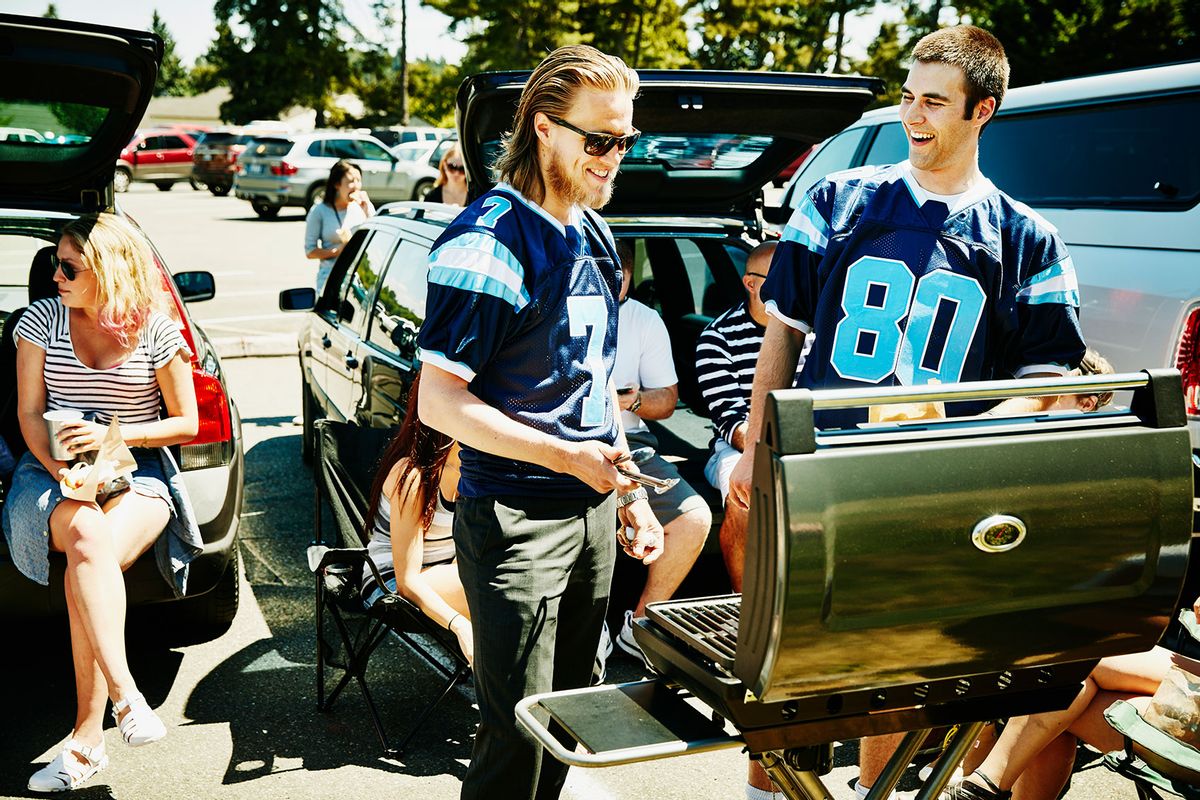Tailgating season is upon us in anticipation of Super Bowl Sunday. Guy Fieri will host his third annual “Guy’s Flavortown Tailgate,” which invites over 10,000 fans on Game Day to enjoy good food, music and entertainment in New Orleans. Similarly, Smirnoff is introducing “The Longest Tailgate,” which promises a 60-foot truck filled with ice-cold cocktails, grilling stations and a performance from pop star Flo Rida.
“Tailgating isn't just a pre-game ritual — it's a time-honored tradition where NFL fans rally together, no matter who they root for,” the brand said in a Tuesday press release. “And for football's biggest weekend, the Official Vodka of the NFL is going bigger, bolder and longer than ever before.”
Indeed, the tradition of tailgating has been a staple in American football culture for years. But interestingly, the pre-game party doesn’t have roots in the States. Instead, they can be traced back to the fall harvest celebrations of Ancient Greece and Rome.
According to Tonya Williams Bradford, who co-authored a 2015 cultural analysis of tailgating published in the Journal of Consumer Research, such early celebrations were filled with activities commonly associated with tailgating today.
“The notion of people gathering around food is not new—when contests emerged for entertainment, it was natural for food to be part of the gathering,” Bradford, an associate professor of marketing at the University of California at Irvine, told The HISTORY Channel. “For practical reasons, people would travel to watch and would bring meals. This turned into more festive gatherings, transforming the pragmatic into part of the overall experience. So, we find a strong connection between early gatherings and what we observe in modern times.”
The first-ever American tailgate took place on July 21, 1861. However, it wasn’t a pre-game function. Instead, residents of Washington travelled via carriages and buggies to Virginia, where they convened and enjoyed a hearty feast while watching the first major battle of the American Civil War: the First Battle of Bull Run. Some spectators even yelled out words of encouragement to their preferred side. All of this occurred far from the battlefield, of course.
Per The HISTORY Channel, Union Captain John Tidball reportedly saw a “throng of sightseers” and peddlers “in carts loaded with pies and other edibles.” According to the American Battlefield Trust, the food was less for celebratory purposes and more a necessity, considering that the spectators travelled more than seven hours by carriage to Manassas Junction. Still, the gathering was filled with much rumpus as spectators also drank copious amounts of wine and whiskey.
Eight years later, the first football game was played in America, where fans were believed to have dined from a wagon while watching Rutgers and Princeton battle it out on the field. More than a decade later, fans were reportedly sipping on champagne while watching the annual Yale-Princeton Thanksgiving game in New York from horse-drawn coaches parked on the sidelines.
The term “tailgating” wasn’t in the English lexicon at the time, but football fans nationwide were certainly partaking in its festivities. Football’s rise occurred at the same time as the automobile age. In fact, the first, real pre-game tailgate was believed to have taken place before the Harvard-Yale game in 1906 because automobile registrations were at a record high for the first time since its inception. “The open field about the grounds were simply black with machines parked together in such a hopeless mass as to make it seem impossible for one ever to find his own once more,” The New York Times reported. Those who could afford motorized vehicles were also met with jealousy. The outlet noted that opposing fans who traveled by bus or train “gazed with envious eyes as they neared the field at small parties of automobilists eating tempting viands that had been brought in hampers spread out in picnic fashion on a table cloth laid upon the ground.”
As for when tailgating became a word itself, that information is a bit unclear.
“Some sources credit former Yale SID [Sports Information Director] Charley Loftus with coining the term [tailgating],” Rich Marazzi, author of “A Bowl Full of Memories: 100 Years of Football at the Yale Bowl,” told Vice in 2014. “However, in my opinion, it is not definitive, although I do believe that in his writings and promotions he at the very least popularized the term.”
Want more great food writing and recipes? Subscribe to Salon Food's newsletter, The Bite.
Tailgating officially took off in the 1950s with the mass production of portable grills and plastic coolers. Following World War II, suburban grilling culture became a major part of modern Americana along with automobile ownership, which went up from 28 million in 1946 to an astounding 56 million in 1957. NFL teams caught onto this trend and began constructing larger stadiums with significant amounts of parking. Same with collegiate football teams, like Michigan and Ohio State.
The most famous (and intense) tailgating party arguably occurs before the annual game between the Florida Gators and Georgia Bulldogs. In 1958, Florida Times-Union columnist and editor Bill Kastelz described the festivities — which start on a Wednesday and end on Saturday — as “The World’s Largest Outdoor Cocktail party.” The nickname even became the game’s slogan until 1988. It was later dropped due to several alcohol-related college campus incidents.
Today, tailgating remains a core part of American football culture — more so at the collegiate level but at the professional level too. Not much has changed since the earliest parties. At its core, tailgating fosters a sense of community amongst hardcore football fans who love a good game with equally good food and drinks.
Read more
about Superbowl food:



Shares